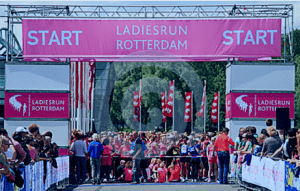 I recently read the book Being Mortal by Dr. Atul Gawande about empowering people to make end of life decisions. Now you might be wondering, what does that have to do with scrum? Well it turns out the same questions we might ask a dying person to help facilitate their end of life in an empowering way are the same ones we might ask a client to empower their scrum practice or agile transformation.
I recently read the book Being Mortal by Dr. Atul Gawande about empowering people to make end of life decisions. Now you might be wondering, what does that have to do with scrum? Well it turns out the same questions we might ask a dying person to help facilitate their end of life in an empowering way are the same ones we might ask a client to empower their scrum practice or agile transformation.
Read the full article…
Author Archives: Cathy Simpson
What Is The Role Of Project Manager In Scrum?
This question came from a client: What is the project manager’s role in scrum?
In answer to your question about project managers, there is no project manager role in scrum. The duties of a project manager gets split between the product owner, scrum master, and the development team.
The product owner has the vision of the product and is the business representative accountable for making sure the business is kept up to date about the product, the schedule, and the budget. The product owner does this in multiple ways including:
- Grooming and refining the product backlog
- Understanding the development team’s velocity so he/she has a sense of when backlog items may be ready for release
- Communicating frequently with the stakeholders
- In the sprint review meeting, helping the team demonstrate new features and facilitating conversations with the stakeholders on the direction of the product and the product backlog
- Sharing and maintaining a budget
Creating Scrum Teams – Choosing Who Is On What Team
Question
How should we form scrum teams as our organization adopts scrum?
Answer
Deciding how to form teams, and which people should be on which teams is the work of management. Of course there are many ways management might choose to do this. One of the most effective ways I’ve found to figure out roles in a scrum transition is to let people decide for themselves! This may sound shocking (who lets employees or even worse, contractors, decide what role they will fill), but we’ve seen it work very well. The operative word is transformation. The power in scrum comes from its focus on self-organizing teams producing value rather than individuals doing work.
Read the full article…
When Can We Start Sprint 1?
Question
 How long should we time box the prep time before the first sprint starts – i.e. the time used to decide on a product that has a good chance of meeting the goals, make effort and business value estimates and get the top product backlog items to be sprint ready?
How long should we time box the prep time before the first sprint starts – i.e. the time used to decide on a product that has a good chance of meeting the goals, make effort and business value estimates and get the top product backlog items to be sprint ready?
Answer
I would look for the shortest time you can to prep. To get started in a sprint you need a team and a product backlog. You don’t need a complete and perfect product backlog – since more product backlog items will get added as you go along and existing items will be altered and sometimes removed. I would start working and refining the backlog as you go – so you don’t end up with a “design sprint” that takes longer than a sprint itself.
The 2017 Scrum Guide outlines that up to about 10% of the development team’s capacity will be used in backlog refinement activities. These activities are ongoing and collaborative between the product owner and the development team. The scrum team decides how and when refinement is done. In the initial sprints, that activity might look like several backlog refinement meetings to get the backlog to a state where there are 2-3 weeks of sprint ready product backlog items. After that it may look like one refinement meeting per week and the development team members doing research, prototyping, etc. to get information to refine the product backlog items.
Read the full article…
Excuse me – Are you sprint ready?
 A common complaint I hear from scrum teams: We didn’t finish all the stories we committed to deliver in the sprint. While there are many reasons for this, one often-overlooked one is: The user stories were not ready to enter the sprint in the first place. The solution is for the scrum team to decide which stories are sprint ready before the sprint planning meeting even starts.
A common complaint I hear from scrum teams: We didn’t finish all the stories we committed to deliver in the sprint. While there are many reasons for this, one often-overlooked one is: The user stories were not ready to enter the sprint in the first place. The solution is for the scrum team to decide which stories are sprint ready before the sprint planning meeting even starts.
The sprint ready vote typically happens during a backlog refinement session (AKA story time or product backlog grooming meeting). Sprint ready means the team is confident they can accomplish the story in one sprint. They have:
- Confirmed and agreed on the acceptance criteria
- Estimated the size
- Confirmed all the story’s dependencies are complete
- The story is small enough to be comfortably completed in a sprint (with all surrounding required processes)
I know this sounds amazing, even too good to be true. Think about how the chances of work being completed in one sprint would increase if all those aspects of story preparation were completed before the team started? I know – mind-blowing!
So how do you get there? A few small changes in story time and sprint planning make this possible.
Read the full article…
